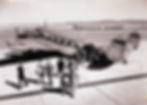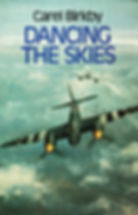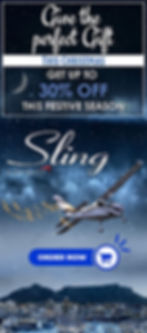Solomon “Pi” Pienaar – A Gentleman of Calibre
- Garth Calitz
- Feb 23, 2021
- 6 min read
by Illona Osso-Fairbrother
2020 has been a year many people want to forget but at the same time, it is also a year to remember The Fallen Veterans particularly from WW2. A handful that are left [if any], are all in their 90’s now. No more Veterans would be around to celebrate significant years e.g. 80th Anniversary [Battle of Britain] – no more 70th or 75th Anniversaries pertaining to WW2 – even the passing of The Forces Sweetheart, Dame Vera Lynn, in 2020 has left a great void.
Notwithstanding, it is now up to the first generation of these gallant men and women to keep their legacy alive.

During my 15 year career with South African Airways, there is one WW2 Veteran whom I had the privilege and honour to work with. There were others but he stands out. None other than the esteemed Captain Salomon “Pi” Pienaar. But this is not about me [or maybe indirectly], it is about the calibre and humbleness of a War Veteran who was concerned about his fellow colleagues – from Management down to the cleaners.

“Salomon Pienaar, boy telegraphist, who worked his way into the pre-war South African Air Force and in peacetime wound up as Chief Executive of South African Airways, was the hero of the greatest of all the adventures that befell the SAAF’s unarmed Mosquitoes”.

About 1976/77 I was working as Secretary/PA to the then Public Relations Manager, Mr Piet van Rensburg, and a staff of twelve. Capt. “Pi” Pienaar, as he was affectionately known, was then Chief Executive. We both arrived at work long before anyone else and more often than not, Capt. Pienaar would join me for a cup of coffee made by Joseph, the “Tea Boy”, a term that would be scoffed at today but was the norm at the time. Such was his nature that he even remembered the names of Joseph’s wife and children and always asked after their well-being.

And so it happened that one such morning chatting over a cup of coffee, Capt. Pienaar had asked me where my father, himself a WWII veteran, came from. When I mentioned Udine in Northern Italy, he was most intrigued. He said he had flown over Udine! At that moment, Mr Van Rensburg himself walked in and promptly asked Capt. Pienaar to tell me the story of the “Speck in his eye”. Apparently, the mirror inside the cockpit of the Mosquito gives a view of only one side of the tail and there is also a blind spot caused by the tail itself.
On 15 August 1944, whilst on a reconnaissance flight together with his Observer, Archie Lockhart-Ross, Capt. Pienaar had the first encounter with the unknown Messerschmitt, the Me 262 twin-engined jet fighter. This was the “speck in his eye”. All together the Messerschmitt made 12 attacks.

Capt. Pienaar was not due to fly that day but Intelligence had called for a quick, urgent flight over the Black Forest region of Germany. They had underground information, but no real gen, on a “secret weapon” the Germans were testing there. Quote “Normally in the squadron you would never volunteer for another man’s flight. It was considered unlucky. But the pilot due to fly that day had a rotten cold and the Mosquitoes of that day were just slightly pressurised, his ears wouldn’t have stood the altitude. So I volunteered for the flight in old NS 520, my plane”. Unquote

With crippled aircraft, Capt. Pienaar had “…..decided that if I was going to sleep that night at all it would be in my own bed back at 60 Squadron base [of which he was Commander] at San Severo in Southern Italy…as we swept into Italy, there was a big airbase dead ahead of us, Udine, full of fight and fighters and well avoided by Allied airmen... I pushed the Mossie all the way down to the deck and just held it over the runway...finally over the airfield and heading out to the safety of the Adriatic”.


“WW2 had scarcely ended in 1945 before South African Airways resumed business with a deferred but prepared peacetime programme. The airline was determined to be seen as one of the finest in the world, with the best pilots and the best airliners. Captain Salomon Pienaar, DFC, AFC, was snatched out of the SAAF while awaiting demobilisation. Still, in military uniform, he and three other master pilots seconded from the SAAF to the airline.”

A more detailed account of Capt. “Pi” Pienaar’s career can be found in the book by Carel Birkby called “Dancing the Skies”. A remarkable achievement from WW2 Pilot to Chief Executive Officer of an Airline – all taken in his stride.
And this is what is so heartbreaking – these magnificent men in their flying machines built up an Airline one can be proud of but sadly, today, the past history of achievements etc. seems to want to be forgotten. That is why these stories need to be told. SAA was a fine airline – technically the best and it did have the best Pilots!
It is the system………
























